Subscribe to my Youtube channel at http://www.youtube.com/@revdrsusan.
Category Archives: Christianity
Pluralism 101
Subscribe to my Youtube channel at http://www.youtube.com/@revdrsusan.
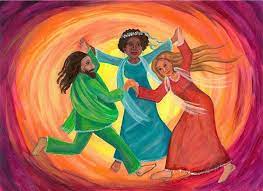
How I Explained the Trinity in 9 Minutes

See previous post. This is what I said.
At the Parliament of the World’s Religions in Salt Lake City 2015, I was scheduled to present a workshop on Monday afternoon. On Sunday evening, I discovered that my workshop had been deleted from the Parliament app. Panicking, I ran down to the Parliament office in the Salt Palace, but it was Sunday evening; no one was there, except for one young volunteer. I explained the problem and he started making calls. Finally, he said he’d left a message for someone who could help, but we needed to wait for a callback. So, we waited and talked. The young man explained that he was a Hindu, a religion major at a local college. They were studying Christianity that semester and he had a question? “Could you explain the Trinity?”
It’s not uncommon for the Trinity to come up in interfaith settings.
And tonight I’m supposed to explain it to you – in nine minutes!
Simplest definition: Trinity, in Christian doctrine, is the unity of Father, Son, and Holy Spirit as three persons in one Godhead. However, it’s not that simple. The doctrine of the Trinity isn’t in the Bible, although some Christians do find hints of trinitarian language. It didn’t become a doctrine until the 4th century. Not all Christian groups are trinitarian, and even for some that are, it’s become a bit of a conundrum, as we strive to place our relationship with the Divine above belief in doctrines and dogma.

It certainly is a reminder of our history, of what was important to the early church fathers (and they were all men), as they tried to make sense of the relationship of Jesus to God and how the Holy Spirit fit into the picture. Without going into detail, they used Greek philosophy to explain how there could be just one God. That’s where you get language like Jesus Christ “being of one substance with the Father” – pure Aristotle.
But it’s important to remember that before the 4th century, there were other ways of understanding Trinity. But Emperor Constantine wanted a unified message on Christian beliefs. And so it was done. And all who disagreed with the winners were condemned as heretics.
But times have changed. Adherence to doctrines and dogma has become more a source of division than unity. And once again, other understandings of Trinity are being remembered. Instead of relying only on the scholastic theology of the 11th-13th centuries that elevated knowledge, understanding, and rationality that has dominated our approach to the Trinity, we’re also rediscovering the spirituality of Christian mystics. In other words, engaging both left and right sides brains.

For example, the Cappadocian Fathers of 4th century Turkey said: “Whatever is going on in God is a flow, a radical relatedness, a perfect communion between Three — a circle dance of love. And God is not just a dancer; God is the dance itself.”
Other Greek Fathers also depicted Trinity as a Round Dance, calling it “an event that has continued for 6000 years, and 6 X 6000, and beyond the time when humans first knew time. An infinite current of love streams without ceasing.”
In our day, Father Richard Rohr, author of The Divine Dance picks up the theme: “Trinity is the very nature of God, and this God is a circle dance, a centrifugal force flowing outward, and then drawing all things into the dance centripetally.”
Medieval Christian mystics, such as Hildegard of Bingen, Meister Eckhart, and Julian of Norwich also wrote out of their experience of Trinity.

For example, Julian who spent years reflecting and writing on visions she’d had when she was 30 years old, really delves into the 3-ness of it all. Probably the most famous of her visions was this one, from this comes the portrayal we often see of her holding a hazelnut. She wrote:
“In this God showed me a little thing, no bigger than a hazel nut, lying in the palm of my hand. In this little thing I saw three properties. The first is that God made it. The second that God loves it. And the third, that God keeps it. But what is this to me? Truly, the Creator, the Keeper, the Lover. For until I am substantially “oned” to God, I may never have full rest nor true bliss. That is to say, until I be so fastened to God that there is nothing that is made between my God and me.”
Now you still might be thinking that we’re trying to force God into a 3-part box. Why hang onto Trinity at all? In a stunning recent work called The Holy Trinity and the Law of Three, Cynthia Bourgeault, busts open our silly attempts at defining God, at the same time reclaiming Trinity for a new spiritual age. She suggests that the principle of three is actually the operating principle of the universe (present in many religions) which undercuts all of our dualistic thinking (light/dark; heaven/earth; human/divine; male/female, etc.) that holds us back from being fully human.
She’s actually echoing what Carl Jung discovered over 100 years ago: “Triads of gods appear very early, at the primitive level. Arrangement in triads is an archetype in the history of religion, which in all probability formed the basis of the Christian Trinity.”
So while we’ve traditionally explained the development of the doctrine of the Trinity as the need to give divine status to Jesus and the Holy Spirit while remaining monotheistic, it might be the other way round. Our unconscious disposition was already trinitarian, which then required a theological explanation. Three is often considered to be the perfect number, the unifier of dualities. And it does appear, not only in Christianity, but across cultures, religions, and time.
Richard Rohr: “Trinitarian theology was almost made to order to humiliate the logical mind. If actually encountered and meditated on, God as trinity breaks down the binary system of the mind. It makes either-or thinking totally useless. Perhaps, in addition to everything else, trinity is blessing, to make us patient before Mystery and to humble our dualistic minds.”
So, if we go back before all the controversies of early Christianity and before our modern attempts to explain Trinity with shamrocks, triangles, interlocking rings, and science project displays of water, ice, and steam, we find that our ancient ancestors understood the triune nature of existence on the deepest subconscious level, which then translated into symbols and archetypes found in our origin stories, myths and even fairy tales, like The Three Little Pigs and Goldilocks and the Three Bears and children’s songs like Three Blind Mice.
And this is how we can find our place within the story. What the mystics have described is the communal nature of the Divine, the inherent relationality of the Trinity. The Creator, the Keeper and the Lover are not self-contained entities in a pantheon of gods. Rather, the Trinity is a dance of Love, with us dancing in the midst of the circle as well. It is a dance of relationship, of communion and of community.
As we become more adept at using our right brains to re-imagine what God is like, we will see Trinity (this number three), not as a literal, limiting number, but as a process of union with the completeness and perfection of All That Is whether you call that: Father/Son/Holy Spirit, Creator/Redeemer/Sanctifier, Creator/Creating/Creation, or (as St. Augustine suggested) Lover/ Beloved/ Love Itself.


Explaining God in 9 Minutes

How would you explain your understanding of God, the Divine, Higher Power, or however you understand that which is bigger than ourselves? Are you apophatic (the so-called ‘negative’ approach, which means emptying the mind of words and ideas about God) or cataphatic (the so-called ‘positive’ approach, that uses words, images, symbols, ideas for the Divine)?
Are you a theist (for whom God refers to a being beyond the universe, another being in addition to the universe) or a panthentheist (for whom God does not refer to a being separate from the universe, but to a sacred presence all around us)?
And how would you convey your understanding to a person of a different religious tradition?
That is my assignment for the next two weeks. On August 18, the Peninsula Multifaith Coalition will hold a panel discussion that will explore the concept of God. Six different faith traditions will be represented, and I have the challenge of presenting the Christian understanding of the Divine in just nine minutes.
This is a daunting task and the intrafaith nature of such an endeavor is that there are numerous ideas about God within Christianity. I have always approached assignments like this by explaining that I could speak only for myself, not for every branch of the Christian tradition. As a progressive Christian who leans more towards the apophatic and panentheistic, I’ve found that I’m not always in alignment even with my Lutheran background. And this assignment will be even tougher. Our planning group wanted someone from within mainline Christianity to talk about – Dum Dum Dumm – the Trinity.
Oh, boy. Should I start off with the claim by theologian Karl Rahner that if the Trinity were to quietly disappear out of Christian theology, never to be mentioned again, most of Christendom would not even notice its absence! Probably not.
It’s not like I haven’t written and spoken about the Trinity. Looking back in my records, I can find a bunch of sermons and blog posts that deal with it. That kind of made me wonder why I’d spent so much time on a topic most of Christendom wouldn’t even miss. I mean, many progressive Christians have ditched it altogether. But I am one who is reluctant to throw out the baby with the bathwater. And there are some theologians, like Richard Rohr (The Divine Dance) and Cynthia Bourgeault (The Holy Trinity and the Law of Three: Discovering the Radical Truth at the Heart of Christianity) who have made the Trinity much more intriguing to me.
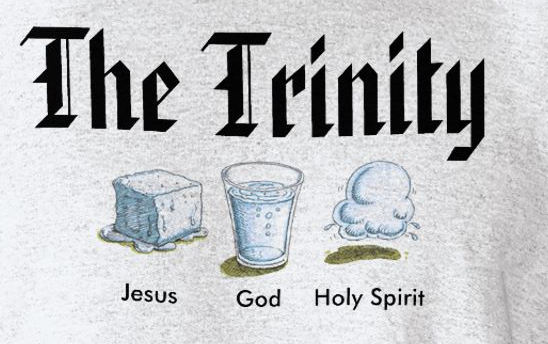
But how to approach it an interfaith setting – and in nine minutes? Do I go with the good old ice/water/steam analogy (very kataphatic)?

https://creativecommons.org/licenses/by-sa/4.0, via Wikimedia Commons
Or a more apophatic image, conveying the unknowable Mystery?
You can probably guess which appeals more to me.
So I have an interfaith and an intrafaith dilemma. My understanding of the Trinity actually is very interfaith friendly. But it isn’t the mainline version.
I don’t have an answer yet. But as soon as I figure out what to do with my nine minutes, I’ll let you know.

Spiritual Fluidity

I was very interested when I learned that the book club of my area’s interfaith organization was reading When One Religion Isn’t Enough: the Lives of Spiritually Fluid People by Duane R. Bidwell. I hadn’t heard of this book, even though it was published in 2018. But I was intrigued because in my book, The INTRAfaith Conversation, I have a chapter entitled “New Voices.” And one of those voices is “Hybrid Spirituality: Multiple Belonging.” In it I quoted Francis X. Clooney, SJ:
The phenomenon of “multiple religious belonging” is now deeply engrained in American culture. We can no longer imagine simply the prospect of well-established religions and their members deciding whether to dialogue or not. People, younger people in particular, find themselves in the position of having multiple religious attractions, and experiences and commitments which cannot easily be fit into any given religious system.
For such people, it is unlikely that even upon ecclesial insistence they could give up strands of identity not easily reducible to a single tradition or church.
This obviously has huge implications for the church in the 21st century and we would be wise to pay attention to it.
I did learn (or relearn)some things from Bidwell’s book, beyond enjoying the stories he told of people living out their hybrid spirituality and resonating with his experience as an ordained pastor navigating the ecclesiastical institution as a hybrid.
First, was his statement “I do not believe that God is one or that all paths reach the same mountain.” This reminded me of Stephen Prothero’s book God Is Not One: the eight rival religions that run the world– and why their differences matter. I squirm when I hear interfaith friendly people declaring that “it’s all the same God” and “we’re all clinging the same mountain on different paths.” Even at a session of the Parliament of the World’s Religions, I was surprised when a speaker declared that we all worshipped the same God – especially when we’re also including people of no faith.
But I realized that I have preached about the one-ness of the Divine myself. A few weeks ago, when John’s gospel’s Jesus prayed “that we might all be one,” I played the music video “One” by Billy Jonas. It’s really a very cool video, but now I can see the problem in some of the lyrics.
One plus one
Plus one plus one
Makes ONE
One likes Jesus
One likes Judah
Yogananda, Allah, Goddess,
the Buddha!
Says ‘wait how do you pick a path?’
Solution: NEW new math
One plus one
Plus one plus one
Makes ONE
ONE-der where its leading to.
One-derful, wondrous thing
One way – the way we’re going.
One plus one
Plus one plus one
Makes ONE
It might not make a big difference when watching a video, but it’s something to think about.
The second thing I found interesting was Bidwell’s section called “Names Matter.” It reminded me of the explanation in my book of the dilemma of what to call the interfaith movement:
There is much ongoing discussion about what to call the movement. The Rev. Dr. Andrew Kille, executive director of the Silicon Valley Interreligious Council (SiVIC) writes that “interfaith carries some muddy implications that can be confusing – ‘interfaith’ organizations in the past meant ‘ecumenical’- all Christian, or, at best, Christian/ Jewish. It has also come to describe traditions that blend two or more religious observances into some whole. We chose ‘interreligious’ partly because the term is less familiar, partly because it suggests relationships between distinct traditions, rather than a blending of them. Multi-faith has much the same kind of sense about it. ‘Interreligious’ is also a term that hopes to include traditions for whom ‘faith’ is not really a meaningful concept- Buddhists, Wiccans, etc.”
Interfaith? Multi-faith? Interreligious? Multi religious? Pan-spiritual? Religio-pluralistic?
For the purpose of this book, I will usually use ‘interfaith.’
Now, Bidwell has added multiple religious belonging, dual religious practice, religious hybridity, to the list of problematic names and the challenge they entail. He chooses instead to use spiritual fluidity, religious multiplicity, and multiple (or complex) religious bonds.
For those of us who care about such things, it just goes to show the ongoing complexity of our religious/spiritual landscape.
And for those who don’t, there’s always
One plus one
Plus one plus one
Makes ONE
And maybe that’s OK.
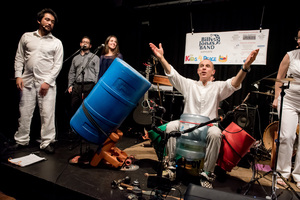
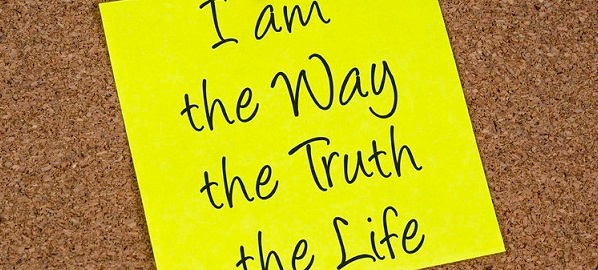
INTRAfaith at the Parliament of the World’s Religions
It’s been a long time since I’ve posted here. When last we met in January 2020, I was organizing a screening of Same God, the story of the Wheaton College professor who was removed from her tenured position because of her “embodied solidarity” with Muslims.
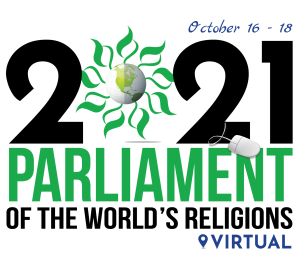
But then . . . well, 2020 happened. And it felt like a whole lot of other issues took center stage. I pretty much decided to give up on promoting my book, blog, etc. When I got the notice that the Parliament of the World’s Religion would be on line this year and was soliciting proposals for workshops at this years online gathering, I decided to give it a pass.
But, as is the way of the universe, something happened. I received two emails. The first was from members of FEZANA, a coordinating organization for Zoroastrian Associations of North America. They planned to propose a panel discussion on the need for Interfaith organizations to become incubators for intrafaith dialogue. They had somehow found me on the Internet and wondered if I would be interested. Of course, I was interested! That proposal was accepted and plans have begun for our presentation on “Tweaking the Interfaith model: Interfaith Organizations as Incubators for Intrafaith Dialogue.” More details will come as our planning proceeds.

The second email was from a retired Lutheran pastor in St.Paul, MN who had found my interview with Steve Kindle on Pastor to Pew about how to deal with John 14: 6: “I am the way, and the truth, and the life. No one comes to the Father except through me,” which John attributed to Jesus. Listen to that podcast here.
Rev. John Matthews had begun an initiative called the 14:6 Project. He says, “The exclusivity of this verse, while ‘understandable’ in its late-first-century historical context, hinders authentic dialogue with other faith traditions. The mission of the 14:6 Project is to focus on this verse of New Testament scripture that is so problematic for Christian involvement in interfaith settings.
He comes to these conclusions from a long career in this area. He was a founding member of the Evangelical Lutheran Church in America (ELCA) Consultative Panel for Lutheran-Jewish Relation (1990-2000), chaired the Region III (ELCA) Task Force for Jewish-Christian Relations (1990-2005), and served on the program advisory committee of the Jay Phillips Center for Interfaith Learning at the University of St. Thomas in St. Paul (2004-2008). While on the ELCA Consultative Panel, Pastor Matthews assisted in drafting the “Declaration of the Evangelical Lutheran Church in America to the Jewish Community” (1994) which is now a part of the permanent display on anti-Semitism at the United States Holocaust Memorial Museum in Washington, DC.
Our workshop will be “A Deep Dive into One Barrier to Christian Interfaith Relations: Introducing ‘The John 14:6 Project.'” Our hope is to find others who want to continue the work of re-imagining this verse. We believe that If interfaith relationships are to thrive, each tradition must work on its own intra-faith issues. John 14:6 is Christianity’s intra-faith challenge.
So I’m back in. In fact, a third proposal, “Dismantling Patriarchy in the World’s Religions” was also accepted – but that’s the subject of another post. My commitment to the intra-faith conversation continues!

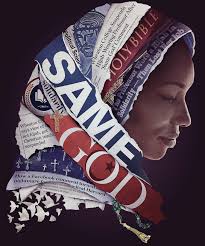
Same God Is Out! Go See It!
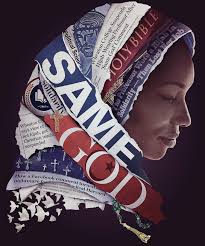 “Same God” – Embodied Solidarity Comes at a Price
“Same God” – Embodied Solidarity Comes at a Price
Back in 2016, I wrote two posts about Professor Larycia Hawkins, who was removed from her tenured position at Wheaton College because of her “embodied solidarity” with Muslims.
Wheaton College: an Intra-faith Controversy
The Professor Wore a Hijab in Solidarity – Then Lost Her Job:
An INTRAfaith Case Study
Then in 2018, I learned that there was a documentary about this intriguing story. So, of course, I wrote about that: Do Muslims and Christians Worship the Same God: More from Wheaton College
Now, it’s here! “Same God” is being shown this month on some PBS stations. Watch the trailer and find local listings here. There will also be a limited theatrical release beginning March 8. The best way to get information is to follow @samegodfilm on FB, Twitter, and Instagram.
“Same God” was directed by Emmy-winning documentary filmmaker Linda Midgett, who is herself a graduate of Wheaton. But make no mistake about it; this is not a defense of the institution. Nor is it a condemnation. It is a beautifully filmed, honest telling, not only of Dr. Hawkins’ story, but also of the history and current state and challenges of evangelical Christianity.
A Quick Recap
It really all started in 2013, when Dr. Hawkins (or Doc Hawk as students call her in the film) became the first female African-American tenured professor at Wheaton. At Wheaton, an explicitly Christian liberal arts college, all faculty members are required to annually sign a covenant which defines what it means to be “dedicated to the service of Christ and His Kingdom.” As the film tells us, Dr. Hawkins willingly and faithfully signed this covenant upon her employment and every year thereafter.
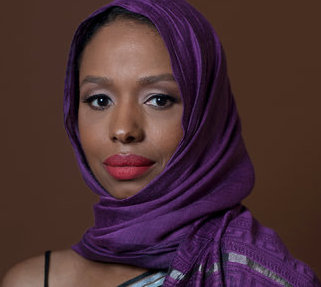
Then, on December 2, 2015, 14 people were killed in a terror attack in San Bernardino. Immediately, anti-Muslim rhetoric in the US began to ramp up. Then-candidate Donald Trump called for a Muslim travel ban. In response to this, Dr. Hawkins posted on her Facebook page that she was standing in solidarity with Muslims because they are also “people of the book” who worship “the same God.” As part of her Advent devotions, she posted a picture of herself wearing a hijab. That’s when it hit the fan. Long story short: she lost her job. The film covers all this very well, with interviews of Hawkins, plus faculty members and students. No one from the administration agreed to be interviewed.
 A Rorschach Test
A Rorschach Test
There is so much in this film that could and should spark dialogue. Someone said that the picture of Dr. Hawkins wearing a hijab was like a Rorschach test; different people would see different things. For example, many Muslim women would see an act of compassionate solidarity (what Hawkins would call embodied solidarity). For others, it would surface questions about academic freedom, religious liberty, and theology. I would add that having seen the film, the picture is a stark symbol of the systems of patriarchy and white privilege at work. It’s also a reminder of the need for interfaith dialogue. The ignorance expressed in many of the reactions to Dr. Hawkins’ post is simply appalling.
What I see in the inkblot is an intrafaith conversation needing to happen.
To be sure, there are many facets to this story: blatant racism and sexism; the emotional toll of the entire saga on Dr. Hawkins; and not to be ignored, the career and financial hits she was forced to take. All of these are very worthy of our attention. But what caught my intrafaith eye was the hurt she experienced in being accused of not being Christian. In a review in the Chicago Tribune, Linda Midgett expressed hope that her documentary will spark dialogue between people of different faiths so they can find common ground. I wholeheartedly agree! But I also hope it will encourage dialogue between people within the same faith – in this case Christianity.
It Really Is about Theology . . .
In the film, Dr. Hawkins says that the controversy in which she was embroiled was not about a theological debate. In the context of her grilling by the Wheaton provost, I agree and applaud her courage in naming what was unfair in the process and her refusal to engage in further “theological conversation.”
Having said that, it is clear that theological questions loom large over the whole saga. Dr. George Kalantziz, Professor of Theology, hits the nail on the head: “When we ask the question ‘does Islam (or any other religion than Christianity) worship the same God?’ it’s always a qualified ‘yes’ and ‘no.’ We don’t all understand the word, not only ‘God,’ the same way, but worship the same way.”
Bingo! Wheaton missed an opportunity to explore these questions.
And Even More So, Christology . . .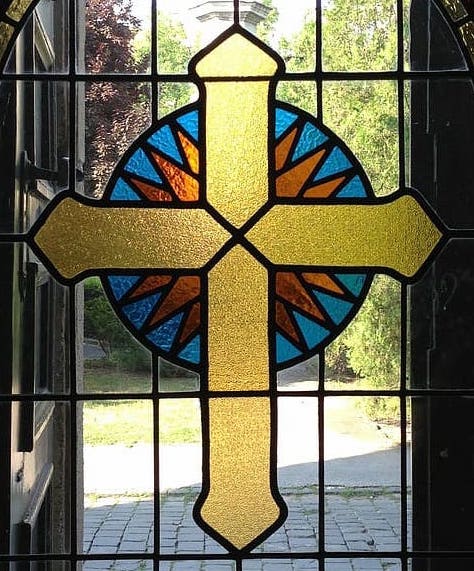
I’m particularly interested in the Christological questions raised by the firestorm of responses to Dr. Hawkins’ assertion that Muslims and Christians worship the same God. In the film, as Dr. Kalantziz is speaking, the camera pans across a beautiful church sanctuary. In the foreground is a gold processional cross. The symbolism is unmistakeable: this is a place that worships Jesus the Christ. Although never explicitly stated in the film, this is the heart of the matter. Who was/is Jesus? How does belief in Christ as the second person of the Trinity inform our beliefs about the truth of other religions?
The interview with Bishop David Zac Niringiye would be the perfect discussion starter on how our interfaith encounters inform/strengthen/challenge/change our own beliefs. Speaking eloquently of the need for Christians to listen to our Muslim siblings, he says, “There is something about what they know of God that might cause me to understand God more.” He goes on to qualify: “Now, it is true, that the revelation of God is finally in Jesus Christ. It is complete.”
There is where I’d want the conversation to begin.
“Your Christianity Isn’t Real”
One of the most heartbreaking aspects of Dr. Hawkins’ story is the fact that her identity as a Christian was called into question. I can relate to a point. My job was never on the line. But I know that my adherence to orthodoxy has been questioned. In my case, it’s because I’ve moved further into Progressive Christianity, which has major differences with more traditional ways of believing. The ironic thing here, though, is that Hawkins is quite at home in evangelical Christianity. In the film, she movingly speaks about her baptism in her grandfather’s church, her love for Jesus and how that informs her work in the world. An interesting aspect of the film is its contrasting of African-American and white evangelicals. I was reminded that ‘evangelical’ does not describe a monolithic group; we on the more liberal side should not use the term irresponsibly.
I’m part of a denomination with ‘evangelical’ in its name: The Evangelical Lutheran Church in America. We often have discussions about removing the ‘evangelical’ part because we don’t want to be identified with what has become white evangelicalism since the 1970s (this was a really helpful part of the documentary). Listening to Wheaton faculty members, it’s clear they’re having some of the same dilemmas. I believe we could easily find some common ground in an intrafaith dialogue.
Who Are We? Christian Identity in the 21st Century
Most religious groups are undergoing a time of questioning about their place in the world. This is causing great anxiety among many people and institutions. As Dr Kalantziz said, “Questions have moved. People, ideas have moved . . . expressions of theology have changed.” This is not good news to many who are resistant to change, especially in theology and religious practice. He talks about the evangelicalism of the past and the future, about two kinds of leadership: pioneers and overseers. The role of overseers is to keep the heritage of American evangelicalism alive.
Wheaton College, despite its pioneering history as a stop on the Underground Railroad, has become an overseer, dedicated to an evangelicalism of the past. Larycia Hawkins, on the other hand, can be seen as helping to usher in an evangelicalism of the future. That’s obviously not an easy place to be. The film poignantly allows us to enter into her life – in the courage, strength, conviction, and resilience, as well as the vulnerability, suffering, and loss. I don’t know how anyone could fail to be moved by her story.
My interest in Dr. Hawkins began as a rather academic exercise in showing an example of an intrafaith issue. Having seen the film, I’m even more of a fan – of the person and her witness of faith in action. It’s still an intrafaith story, but so much more. I hope it will be seen by Christians, from evangelicals to progressives. And I sincerely hope that director Linda Midgett’s vision of her documentary sparking dialogue will be fulfilled: both between people of different faiths and between people within the same faith.
https://www.facebook.com/samegodfilm/
https://twitter.com/samegodfilm/
https://www.instagram.com/explore/tags/samegodfilm/


You Might Be a Christian Atheist If . . .
 New Voices . . .
New Voices . . .
is a chapter in my book, The INTRAfaith Conversation, in which I describe some of the groups now included in the interfaith scene.
These groups include . . .
Atheists and Humanists
Since the book was published in 2015, there have been a lot of new developments. I was aware of the wide range of definitions for atheists and humanists when I wrote the book. Since then, I’ve been fascinated by the further exploration, expansion, and definition of these terms. I’m not much interested in the fundamentalist atheists, who are just as dogmatic as the religionists they criticize. But I am drawn to those who are exploring the boundaries of who and what God (or Being or Presence or no word at all) is.
Probably the most public lately has been Gretta Vosper, the self-professed Atheist who is a pastor in the United Church of Canada (I wrote about her in Should the Atheist Pastor Be Defrocked?). In 1997, four years into her call to West Hill United Church in Scarborough, Ontario, she preached a sermon called “Deconstructing God.” At that point, she defined herself in a more “not this” manner, declaring that she did not believe in a theistic God. Then in 2013, she moved from non-theism to atheism after she read about the plight of Pakistani bloggers who faced punishment as blasphemers for questioning the existence of God. For her (according to her website), “god is a metaphor for goodness and love lived out with compassion and justice, no more and no less.”
In 2017, I met Carrah Quigley when we presented a workshop together at the Parliament of the World’s Religions in Toronto. Carrah identifies as a Spiritual Humanist. According to the Church of Spiritual Humanism, this is a “religion based on the ability of human beings to solve the problems of society using logic and science . . . using scientific inquiry we can define the inspirational, singular spark inherent in all living creatures.” Spiritual Humanism is natural, not supernatural.
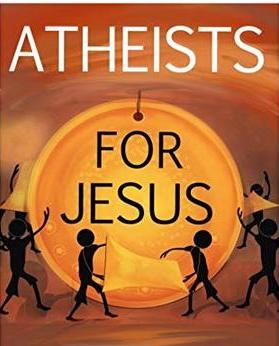 Atheists for Jesus?
Atheists for Jesus?
Then, just this month I came across the category of Jesus-following Atheists (also known as Christian Atheists) in an article entitled Inter-faith Dialogue with Christian Atheists.
Hmm. Intriguing.
From what I’ve read, it seems that the main focus of Christian Atheism is the life of the historical Jesus and the system of ethics drawn from his teachings. Although, regarding the subject of God, there is some divergence. While some do reject the idea of God altogether, others dismiss the belief in a supernatural, interventionist God. According to the author of What Does It Mean to Be a Christian Atheist?, “I still believe in ‘God.’ What I do not accept is belief in a theistic deity, a ‘being’ that created the universe, holds the universe together, or exists in or apart from the universe.”
Of course, Bishop John Shelby Spong has written and spoken much about the death of theism, and I greatly appreciate his insights about coming to reject the belief in a supernatural power. I don’t think he calls himself an a-theist; he’s more inclined to dismiss as inadequate these words for our experiences of the Divine. The experience is what is important. In this sense, I have no qualms about calling myself an a-theist. Especially since he doesn’t reject the reality of mystical experiences of the Holy, as do some who adhere only to the ethical teachings of Jesus.

However, at the end of the day, I still resonate most with Teilhard de Chardin’s panentheism, in which all creation exists within a ‘divine milieu.’
Still, I am intrigued by the ongoing exploration of what we mean when we think about God (the Divine, Spirit, or no name at all). The freedom to go outside the bounds of our traditional (and limited) understandings enhances not only our own spiritual/ethical life, but our communal life as well.
The interfaith world benefits from the presence of those who do not fit the definition of “religion.” The intrafaith scene can benefit as well, if we get past our prejudices (especially when we don’t know the broad range of these groups) and listen to their stories.

“I am the way and the truth and the life” at Churchwide Assembly
 This past week, my denomination, the Evangelical Lutheran Church in America (ELCA), held its triennial Churchwide Assembly. One of the main events was voting on the proposed policy statement: A Declaration of Inter-Religious Commitment. I’m proud to say that it passed 890-23.
This past week, my denomination, the Evangelical Lutheran Church in America (ELCA), held its triennial Churchwide Assembly. One of the main events was voting on the proposed policy statement: A Declaration of Inter-Religious Commitment. I’m proud to say that it passed 890-23.

That might have been due to the fabulous array of ecumenical and inter-religious guests!
There was, however, one moment of concern from the intrafaith perspective. An amendment had been submitted calling a section of the policy statement “inconsistent with Scripture,” which proposed striking some of the language of the statement under the heading “Limits on our knowing” (lines 630-655). The author of the motion based his challenge on our old friend John 14:6, “I am the way and the truth and the life. No one comes to the Father except through me.”
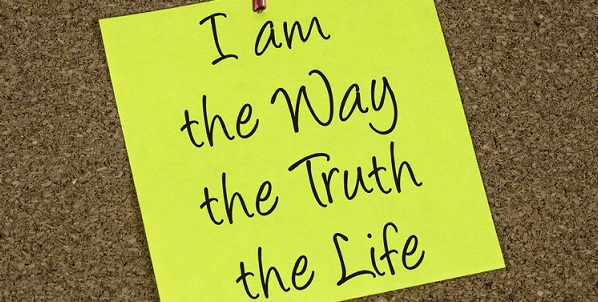 In the amendment he wrote: “We have a clear statement from Jesus, who is fully God and fully man. We do therefore have a basis to know God’s views on religions that do not require faith in Jesus Christ as God’s son.”
In the amendment he wrote: “We have a clear statement from Jesus, who is fully God and fully man. We do therefore have a basis to know God’s views on religions that do not require faith in Jesus Christ as God’s son.”
Speaking from the floor, he added: “I am here to speak truth to power, even if it is an inconvenient truth. I would urge this assembly to repudiate and repent of any false teachings.”
The only other person who came to a microphone stated, “I’m embarrassed that we’re having this conversation in front of our interfaith guests.”
The motion to amend was overwhelmingly defeated and the policy statement was adopted.
Now, don’t get me wrong. I am delighted that this policy statement has been adopted. But I’m also disappointed that this very appropriate question was not adequately addressed. To be fair, I doubt that it could have been adequately addressed in the context of the amendment’s discussion time. And I have to wonder how many other voting members had similar questions but not the courage of this one lone amendment-maker. Having the discussion with all the interfaith guests standing right there on the stage might not have been an embarrassment, but it sure might have been a deterrent.
As I have said innumerable times, the “What about when Jesus said . . .” question has come up in virtually every interfaith workshop I’ve ever led with Christians.
Here is an audio version of the interview I did on Pastor to Pew a few years ago. We talk about my book, The INTRAfaith Conversation. But mostly it’s my take on John 14: 6 and how taking the intrafaith question seriously is a necessity for today’s church. 
Presiding Bishop Eaton said (in reference to our ecumenical relations) that “ecumenism is not an add-on, but a central part of what it means when we say we are church.” I know even that’s a stretch for many congregations, but I wish that our inter-religious relations could also be central to what it means to be church.
But if we do take interfaith seriously,
we’re going to have to also take intrafaith seriously.
Thankfully, there’s a resource for this! (Shameless self-promotion warning)

“. . . meeting and respecting a person of another religion confronts us all with the question raised by Marjorie Suchoki in Divinity and Diversity:
Our Christian past has traditionally taught us that there is only one way to God, and that is through Christ. But we are uneasy. Our neighborliness teaches us that these others are good and decent people, good neighbors, or loved family members! Surely God is with them as well as with us. Our hearts reach out, but our intellectual understanding draws back. We have been given little theological foundation for affirming these others – and consequently we wonder if our feelings of acceptance are perhaps against the will of God, who has uniquely revealed to us just what is required for salvation.
“As pastors and lay leaders we are responsible to our congregations to provide the theological foundation for affirming ‘these others.’ Rather than succumbing to what John Cobb calls ‘the danger that sensitive Christians will simply delete central beliefs rather than transform them,’ I believe that we have some serious theological and Christological work to do in defining, or perhaps re-defining, ourselves in light of our interfaith milieu.” (The INTRAfaith Conversation, Introduction)
I really hope we take up the challenge to build relationships with our inter-religious siblings. I also really hope that we’ll also take up the challenge to engage folks like the writer of the amendment. That’s not an add-on either, but should be part of what it means when we say we are church.
then intrareligious dialogue must accompany it.
– Raimon Panikkar

Luther and the Jews: It’s a New Day
 A lot happened at the Churchwide Assembly of the Evangelical Lutheran Church in America (ELCA) last week. Some of it even made national news – and rightly so.
A lot happened at the Churchwide Assembly of the Evangelical Lutheran Church in America (ELCA) last week. Some of it even made national news – and rightly so.
What you might not have seen in the news, but which is a very big deal, is all the interfaith activity. One of the matters brought to the attention of the 927 voting members in attendance was the relationship between Lutherans and Jews. It has not always been a good one.
Years ago, a co-worker who heard I was about to go off to the Lutheran seminary, exclaimed, “I hate Lutherans!” It turned out that her husband was Jewish and she’d read the ugly things that Martin Luther had written in some of his later writings. At that time, I was only barely cognizant of this part of my religious heritage. I didn’t know how to respond.
Many years later, when a group of college students visited my congregation on a tour of local religious communities, one of the first questions they asked was about Luther and the Jews. This time I was more prepared and, thankfully had something positive to contribute.
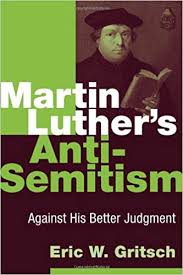
For one thing, I had studied Church History and Reformation Studies under Dr. Eric Gritsch at the Lutheran Theological Seminary at Gettysburg (now part of United Lutheran Seminary) and was aware of his active involvement in the Christian-Jewish dialogue. And although his book, Martin Luther’s Anti-Semitism: Against His Better Judgment, was published long after my seminary days, I do remember him talking about this neuralgic (a favorite Gritsch word) part of our history.
In 1994, “Declaration of the ELCA to the Jewish Community” was released. And in 1998, Guidelines for Lutheran-Jewish Relations. Both of these documents are important milestones. But, in my opinion, what took place at the Assembly took our relationship with our Jewish siblings to a new level. Members of the ELCA Consultative Panel on Lutheran-Jewish Relations led voting members and visitors in litany based on the 1994 statement, including this paragraph:
In the spirit of that truth-telling, we who bear his name and heritage
must with pain acknowledge also Luther’s anti-Judaic diatribes
and the violent recommendations of his later writings against the Jews.
As did many of Luther’s own companions in the sixteenth century,
we reject this violent invective, and yet more do we express
our deep and abiding sorrow over its tragic effects on subsequent generations.
In concert with the Lutheran World Federation,
we particularly deplore the appropriation of Luther’s words
by modern anti-Semites for the teaching of hatred toward Judaism
or toward the Jewish people in our day.
Watch the entire litany here.
And then, Presiding Bishop Elizabeth Eaton introduced Rabbi Jonah Dov Pesner, director of the Religious Action Center of Reform Judaism and senior vice president of the Union for Reform Judaism. His address to the assembly was incredible!
Watch it here. You’ll be glad you did!
I’ll be writing about more of the interfaith and intrafaith aspects of the assembly. But I thought this deserved its own post. Anti-Semitism has deep roots in American history, but in 2018, anti-Semitic attacks were near record highs.
All Christians should stand in solidarity with our Jewish siblings.
Lutherans should be in the forefront.
After watching the news from Churchwide Assembly, I believe – by the grace of God – we just may be.